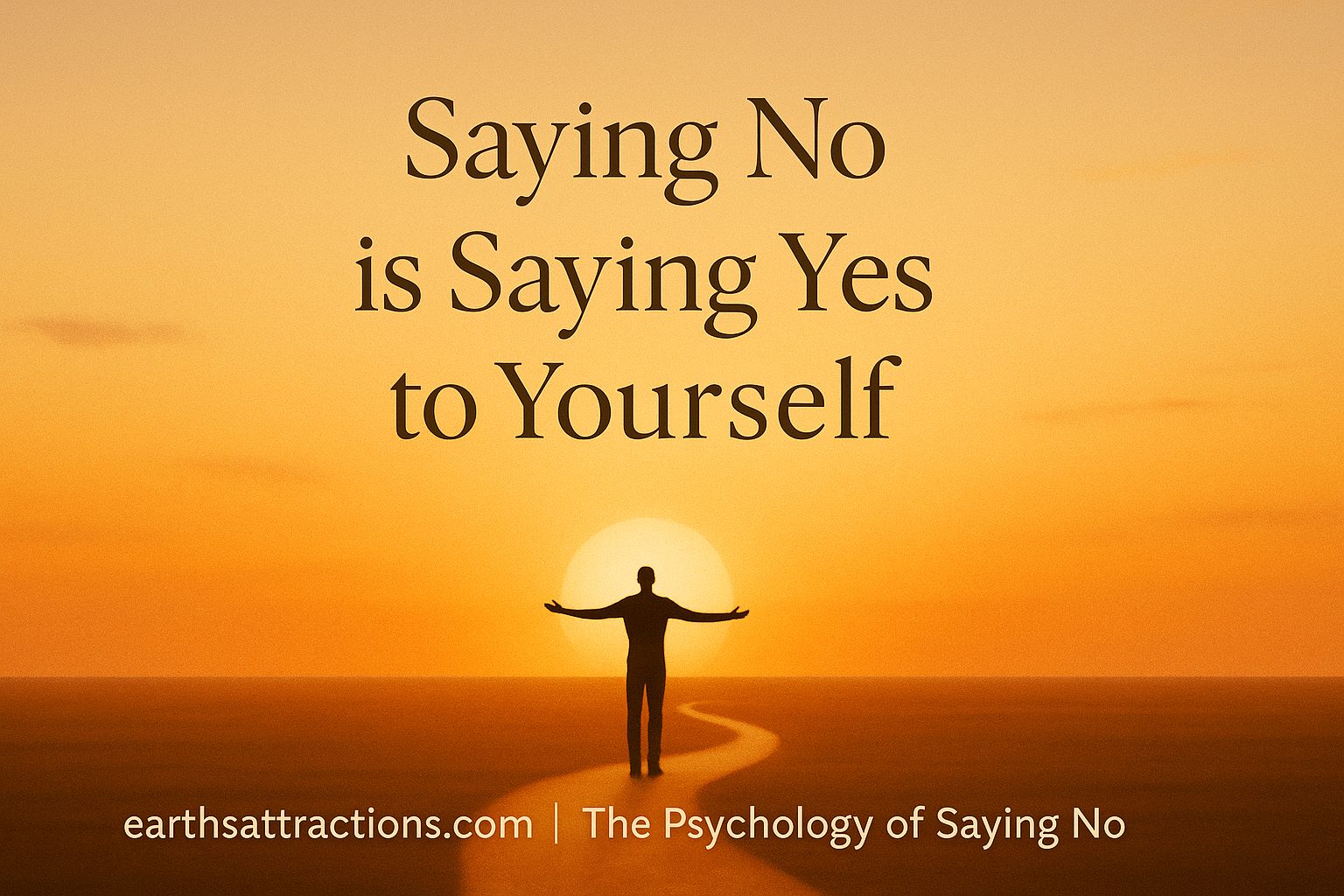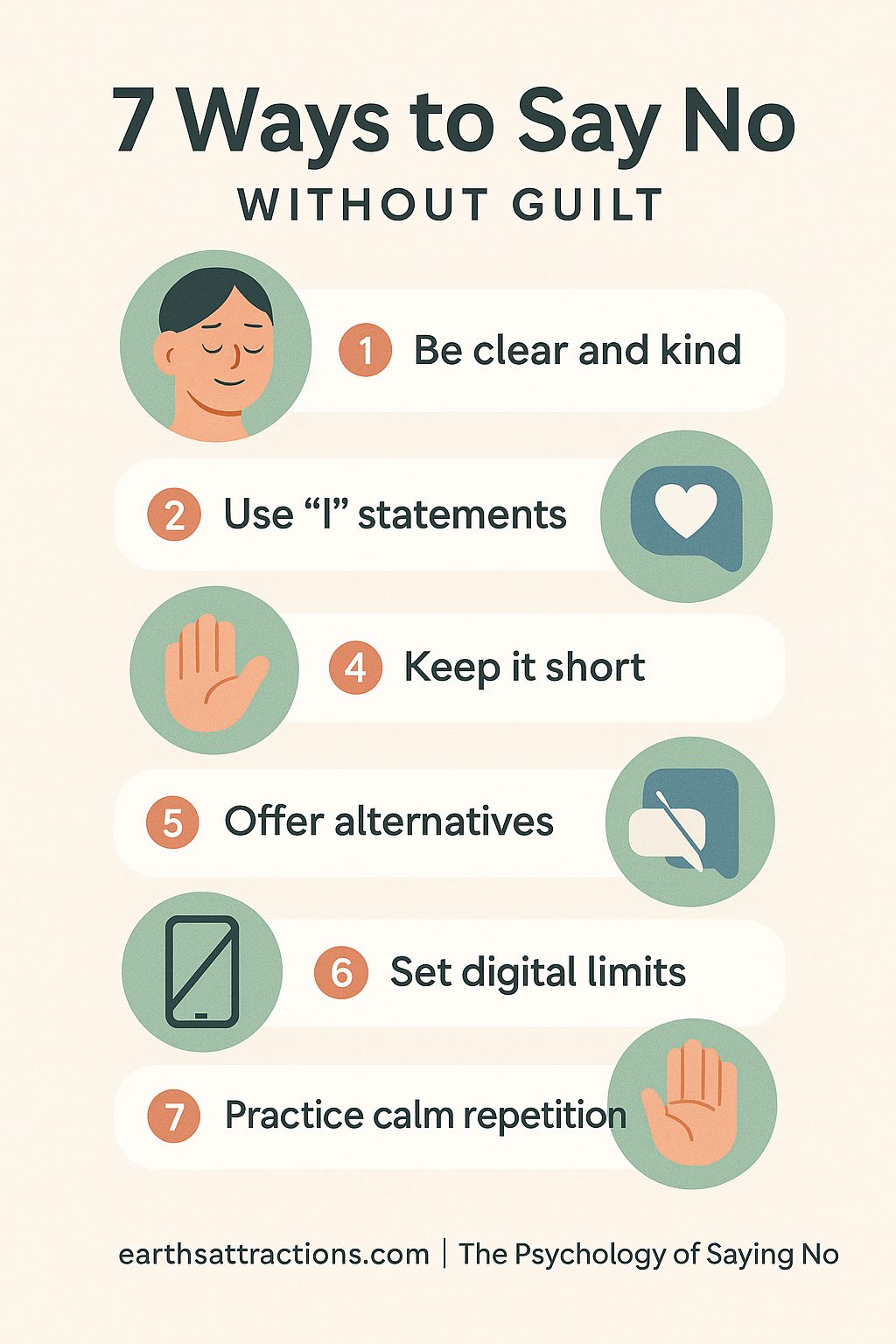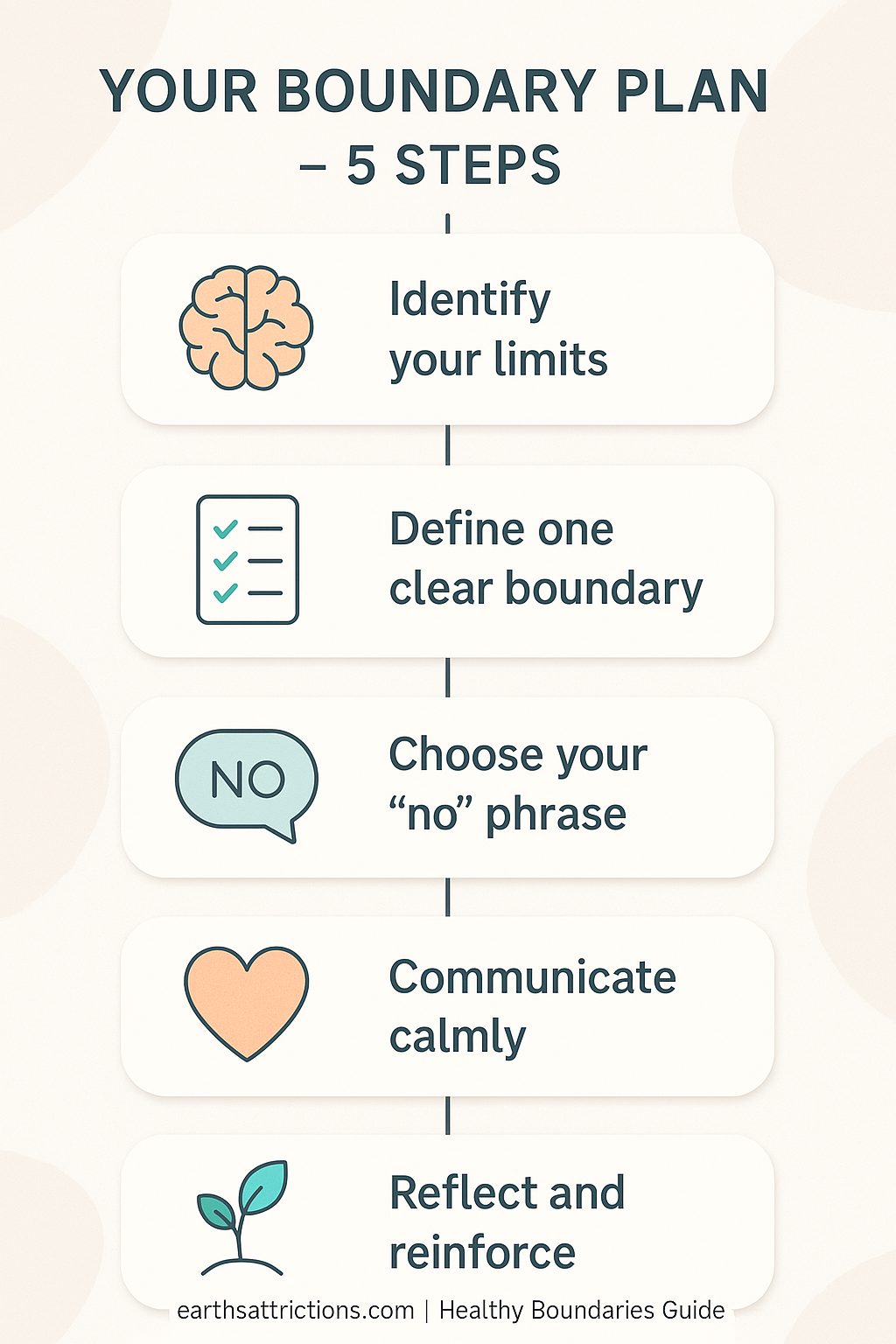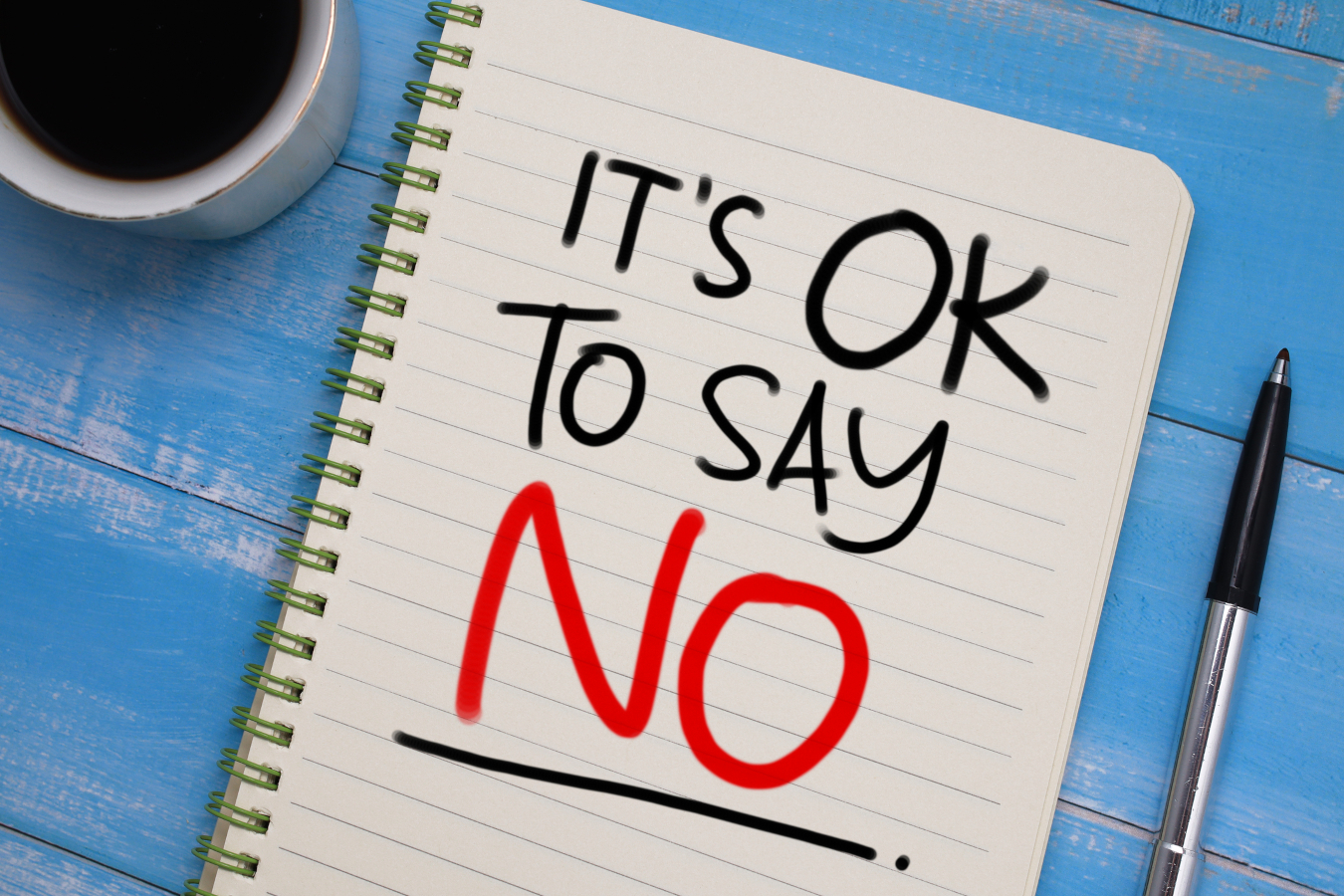I’ve seen firsthand how blurred boundaries can quietly erode both relationships and peace of mind. Some of my friends have struggled in their personal lives because they didn’t set clear limits early on – what started as small compromises slowly turned into patterns that were hard to change years later. Others, especially those working in demanding jobs, constantly feel on call.
Among my friends who are freelancers, it’s even trickier: clients message them at 10 or 11 p.m., or over the weekend, expecting an immediate reply, even when it’s not an emergency. The pressure to stay available all the time makes it difficult to rest, disconnect, or simply recharge.
ID 34800376 ©Martinmark | Dreamstime.com
In an era where your phone buzzes every two minutes, your inbox demands instant replies, and you can hear “can you help me with this?” more often than you’d like – what if the simple word “no” turned out to be your secret weapon?
We live in an age of overload. Consider: heavy smartphone and social-media usage has been linked to anxiety, depression, and loneliness.
Some young people are even switching back to “dumb phones” or deactivating read receipts in apps (take WhatsApp for instance, where I personally know not only younger people, but many executives and people in their 40s and 50s turning the read receipt off) so others don’t know when (or whether) they’ve read messages – just to reclaim space and time. Moreover, research shows that blurred boundaries between work and life lead to emotional exhaustion and reduced happiness.
As a short parenthesis, I can still recall a few years back announcing to all my clients that I would be on vacation in two months (everything was booked). We worked together to ensure that there would be nothing to do on my part during those two weeks. They agreed – all was fine.
And there I was, close to the border (we were travelling to a different country by car), when my phone rang. A client with a question. Sounds familiar?
I calmly reminded them that there were no emergencies, that I was on vacation, and that we’d talk when I got back. I’m still proud of how I handled that moment – because it wasn’t just about a phone call, it was about protecting a boundary.
If you often find yourself saying “yes” when you’d rather say “no” – because you’re avoiding conflict or simply don’t know how – you’re not alone. And you’re definitely not powerless. Learning how to say no and set healthy boundaries isn’t just a social skill; it’s a psychological asset. In this article, you’ll get the science behind why this matters, practical steps to follow (with clear examples), and what to watch out for. Let’s dive in.
Why Saying “No” Matters – The Psychological Power of “No”
1. Boundaries + Overwhelm
Boundaries are the limits we consciously set around our time, energy, emotions, and interactions. Setting boundaries helps you feel grounded and safe – both at work and in your personal life. When you define what’s acceptable and what’s not, you create a sense of stability in your relationships and reduce emotional chaos. Clear boundaries act like invisible guardrails, protecting your time, your values, and your mental well-being.
When you say no to requests or demands that aren’t aligned with your priorities, you’re strengthening your boundaries.
And yes, sometimes you will need to reinforce these a few times before people will really accept them. I know this from my own experience, but also from many of my friends.
2. The mental-health payoff
By declining what drains you, you reduce the risk of overwhelm and burnout. For example, an article in Psychology Today states: “Saying no can create more mental health stability by helping with self-care and build your self-esteem and confidence by setting boundaries.”
In simpler terms: when you protect your time, you protect your mental health.
3. Neuro-science: Your brain supports this
Recent write-ups show that each time you set a clear boundary, you help nerve pathways in your brain (specifically in decision-making regions) become more efficient.
Emerging neuroscience shows that when the brain clearly marks one experience as separate from another, distinct neural circuits are activated – indicating that consistently practising clear limits might engage your decision-making systems and gradually build your sense of self-confidence.
Translation: It gets easier to say no with practice.
4. Context: Overconnected world, eroded boundaries
Heavy smartphone use is correlated with distress and mental-health issues (as I quoted and mentioned a study above)
Also, as mentioned, blurred work–life boundaries (e.g., being “always on”) predict reduced happiness and increased emotional exhaustion.
These trends highlight why the ability to say no – and to set boundaries – is more essential than ever.
If your colleagues/clients/boss expect instant replies – even at 10 p.m. or over the weekend – and you feel guilt and tension, then you should change something. You can turn off read receipts or, better yet, not open emails or discussions that are work-related. Or you can reply, simply, “I’ll reply tomorrow morning”. That’s a small boundary, but a meaningful one. In time, these boundaries should be discussed and agreed with all parties – and reinforced if needed.
Why We Struggle to Say “No”
ID 83776471 ©Antonio Guillem | Dreamstime.com
1. Social expectations & guilt
We’re conditioned to be helpful, cooperative, and agreeable. Remember being a child and your parents asking you to share your toys at the playground/kindergarten/playdates…
Saying “no” sometimes feels selfish or leads to fear of rejection. In a way, we are taught that saying ‘no’ is inconsiderate.
Obviously, it is not for everyone, and this does not mean we should not help others. I am referring strictly to the fact that saying no is often considered impolite.
2. Vague boundaries = wavering
When you haven’t clearly defined what you will and won’t accept, it becomes easy to agree to things that don’t actually work for you, simply because the limits aren’t obvious, even to yourself. Without that internal clarity, outside requests tend to fill every available space.
For instance, someone might routinely accept extra tasks or social invitations “just this once,” until those exceptions become the rule. Once a boundary is written down or clearly stated – such as deciding that evenings are for rest or that weekends are off-limits for work – it’s much easier to make decisions that align with your real priorities.
3. Fear of conflict or damaging relationships
This is a very powerful one. And I will add this: fear of losing a client – if the boundaries that are missing are business-related.
You may worry: “If I say no, they’ll dislike me”, or “I’ll miss out on an opportunity”. These fears are real. But the alternative is often over-commitment, resentment, and stress.
And this will, eventually, result in health issues (including potential mental issues). And this is definitely something we all want to avoid!
4. Technology and the always-on culture
Because your phone is always with you, read receipts show when you’ve seen a message, work email arrives after “official hours”, chats ping at midnight – this blurs the line between your time and others’ demands.
But you can have specific rules – “No Slack after 7 p.m.” – agreed with the manager, and maybe a “do not disturb” mode on her phone. Result: sharper focus during work hours, calmer evenings.
How to Say “No” & Set Healthy Boundaries – A Practical Guide
Here are proven strategies, each with explanation + concrete example + quick recommendation. These are strategies I have used – or discovered and know from friends and my own research. Disclaimer: They are NOT medical advice – if you feel overwhelmed or have any type of issues, reach out to a therapist/doctor!
Use Assertive, Respectful Language
Assertiveness is the ability to express your needs clearly without aggression. Assertiveness training has been linked to reduced anxiety and stress.
A potential work scenario: Your colleague asks you to take on an extra task. You reply: “Thank you for asking me. I’m currently at capacity with Projects A and B, so I won’t be able to commit to this new task right now.”
Another strategy I saw working is to ask “What can I postpone or delegate – and to whom – to take this new task?”
Recommendation: Keep it short. Use “I” statements. Avoid over-apologizing.
Define One Specific Boundary
Explanation: Clear boundaries are easier to uphold. For example, deciding “I don’t check work email after 6 PM / I do not respond to work calls after 6 PM” is more actionable than “I’ll work less”.
I am recommending – again – to have these boundaries clearly communicated to your colleagues/managers/clients and to make sure you are all on the same page. And, obviously, it depends on the industry you are working in – I am speaking in general.
Prepare Your “No” Phrases in Advance
According to the Greater Good Science Center, there are research-based ways to say no across different situations.
An example is: a friend invites you to a last-minute trip: “Thanks for thinking of me – this week is full, so I’ll pass this time.”
A good recommendation: Choose 2–3 “go-to” refusal phrases and rehearse them mentally.
My recommendation is this: always be honest. Think before you reply – you may be tempted to say yes to a night out or a weekend trip – but you are not actually in the mood and need rest or you want to invest the money you would spend on the trip in something else.
Evaluate the situation – and the potential outcomes (I always run scenarios in my head, really fast). Then, based on your desires, limits and goals, reply. Yes, you should prioritize yourself – not being selfish, but taking care of you!
We were recently invited to a wedding and a christening ceremony. They are friends and we would have love to go, but I have a knee issue and I cannot go. So, we declined and said why.
Use the “Yes-No-Yes” Sandwich
This method softens a no by framing it between positives: appreciation + refusal + goodwill. It helps maintain relationships while preserving your boundaries.
I use this in MANY instances in my life. I use this when I have to give some bad feedback (I teach courses, I run a company…) and in many other situations.
Not focusing ONLY on the no, the negative part – helps us all!
In the situation mentioned above – invitation to a night out – or a party – “I appreciate you inviting me to join. I will not be able to participate – I need to finish a project, but I wish you all a great time, and I’d love to hear how it went.”
Use when you value the relationship and genuinely wish to maintain a connection.
Set Digital Boundaries Too
Many boundary-violations come via technology – unchecked notifications, always-on chats, read receipts. Given the data linking smartphone overuse and distress, setting tech-boundaries is crucial.
As I mentioned above, you can use different strategies – disable read receipts, set your phone to “Do Not Disturb” after 9 pm. You also tell your colleagues/managers/clients: “If you message after 6 pm, I’ll reply tomorrow morning.”
If this is something you do not already do, then take it step by step. Pick at least one digital boundary this week (e.g., no chats after an hour, no email on weekends).
Stay Steady When Faced with Push-back
When you first start saying no, you may face resistance (“Are you sure?” “Come on, just this once.”). Having responses ready protects your boundary.
The more you use your boundaries and reinforce them with calm consistency, the faster others will understand – and respect – where your limits are. It also becomes easier for you to reinforce them. Trust me when I say that this will boost your self-esteem and your confidence!
Re-state your boundary calmly. Avoid long justifications.
Common Traps & How to Navigate Them
Trap 1: Guilt-loop (“If I say no, I’m a bad person”)
You decline helping a friend, but feel guilty the entire evening.
Remind yourself that your time and energy matter. Saying yes at the cost of your well-being helps no one.
Trap 2: Fear of Conflict or Rejection
ID 126251458 ©motortion | Dreamstime.com
You go along with a plan you hate because you fear they’ll dislike you.
I know it is not easy to overcome this fear. I have been there. I have accepted things because of it. But now, my advice is this: recognise the fear, but still act in line with your boundary. Healthy relationships involve honest communication.
Trap 3: Vague Boundaries
I mentioned this above – related to another element in this article.
Be very specific in everything in life, including your boundaries. “I’ll try to rest more” is far less specific than “I will not check work email after 8 pm”.
Clarity = consistency.
Trap 4: Over-No’ing and Isolation
This is indeed a huge trap. You say no to everything and then feel disconnected.
Honestly, saying no is about alignment, not avoidance. You can say yes to what truly matters. It is more about saying no to protect yourself – your energy, your time, etc.
Trap 5: In the Case of Power Imbalance or Abuse
If you’re in a situation of manipulation, coercion or abuse, these tips may not be sufficient. Professional support is critical.
Disclaimer: This article is not a substitute for therapy, clinical intervention or crisis assistance.
What You’ll Start Noticing When You Get It Right
If you are not used to setting healthy boundaries, I thought I would include here the things that you will notice when you start having these clear boundaries. How will your life change – for the better?
- Increased energy, less resentment: Because you stop saying yes to things that drain you.
- Clearer focus: Your “yeses” align with what truly matters.
- Better relationships: People respect boundaries. Hidden frustration decreases.
- Improved mental and even physical health: Boundaries reduce stress, thus reducing stress-related wear.
- Greater self-esteem and autonomy: Saying no signals to yourself and others that your time and values matter.
All of these were huge wins for me!
Yes, it is all about learning from experience, taking baby steps, and overcoming fears.
But on the other end of the line, it is a better, peaceful life.
Your Boundary-Setting Checklisties) (Keywords: how to set healthy bounda
If you need some sort of a plan and do not know where to start, I hope this will help:
- Choose one life domain this week (work / relationships / digital / family). DO NOT do it ALL AT ONCE. You will be overwhelmed and may even have a bad experience with boundaries.
- Define one specific boundary in that domain (e.g., “No work email after 7 pm”).
- Select one no-phrase you’ll use (e.g., “Thanks, I’m unable to commit at this time”).
- Communicate your boundary to relevant people (if needed) or change your environment (e.g., phone settings).
- Track the impact: After 3–7 days, ask: “How did that feel? Did I feel more in control? Less drained?”
Readjust if needed, and repeat. The more you practise, the stronger your boundary muscle becomes (thanks to neuroplasticity!).
Cautions & Disclaimers
The information here is for general psychological self-help. It is not a replacement for professional mental-health care.
Saying “no” doesn’t mean always being inflexible. Boundaries are about choice, not avoidance.
The cultural and situational context matters: what is appropriate in one role, culture or relationship may differ. Adapt accordingly.
If you are in a situation of abuse, coercion or severe imbalance, saying no may need external support (therapy, legal, safety planning).
Saying no doesn’t guarantee no conflict or discomfort – and that’s normal. Discomfort doesn’t mean you’re doing it wrong.
My conclusion
ID 221260675 ©M R Fakhrurrozi | Dreamstime.com
Mastering the word “no” and learning how to set healthy boundaries is one of the most liberating steps you can take – for your time, your energy, your values, and your mental health.
The bad part is that you will realise this only after you set the boundaries and you reinforce them, because you will see how your life improves.
Start small. Pick one boundary today. Use a no-phrase. Notice the change. With each step, you’re teaching your brain that your limits matter – and your life is stronger for it.
And be kind to yourself. You may not manage everything perfectly from the beginning. It is ok. It is a learning process.
Your next “yes” will carry more weight, because you’ll be choosing it rather than defaulting. And that, in itself, is powerful.
Take a deep breath. Decide. And say that no – because you deserve that space.
Here are more articles that will help you live a healthier, longer life:
- Scientists Reveal the Unexpected Longevity Habit That Costs Nothing
- Scientists Say This Overlooked Habit Could Add Years to Your Life
- Scientists Say People With This Mindset Are Far More Likely to Reach Age 90+
- Add Decades, Not Just Years: 8 Habits That Could Add 20–25 Years to Your Life (Backed by a Massive Study)
- Want a Longer, Happier Life? Scientists Say This 1-Hour Habit Could Be the Key
- Want to Live Longer? Studies Say These Mental Habits May Help (No Sweat Required)
- Eat Earlier, Live Longer? What a New Study Says About Breakfast Timing, Aging, and Longevity
- Simple daily habits for a healthier mind
- How to De-Clutter Your Mind, Backed by Science
- The Personality Traits That Can Help You Live Longer (and Be Happier)
- How to Build Real Self-Esteem That Lasts (Backed by Science, Not Buzzwords)
- 17 Signs You Are Happier Than You Think
- 11 Signs You Are More Intelligent Than You Think
- Things People With High Self-Esteem Rarely Do
Photo sources (apart from Dreamstime): 1 and 2, 3, 4 are created with ChatGPT











